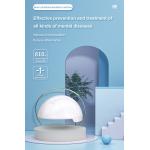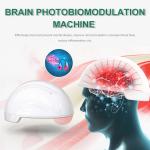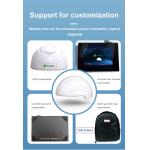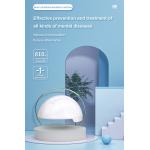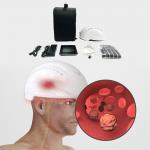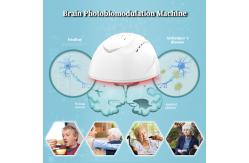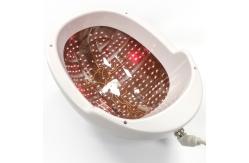Near-infrared light is absorbed by cytochrome c oxidase in
mitochondria ,that produces beneficial effects of PBM.
Photobiomodulation (PBM) describes the use of red or near-infrared
light to stimulate, heal, regenerate, and protect tissue that has
either been injured, is degenerating, or else is at risk of dying.
One of the organ systems of the human body that is most
necessary to life, and whose optimum functioning is most worried
about by humankind in general, is the brain.
The brain suffers from many different disorders that can be
classified into three broad groupings: traumatic events (stroke,
traumatic brain injury,and global ischemia), degenerative diseases
(dementia, Alzheimer’s and Parkinson’s), and psychiatric disorders
(depression, anxiety, post traumatic stress disorder). There is
some evidence that all these seemingly diverse conditions can be
beneficially affected by applying light to the head.
There is even the possibility that PBM could be used for cognitive
enhancement in normal healthy people.
In this transcranial PBM (tPBM) application, near-infrared (NIR)
light is often applied to the forehead because of the better
penetration (no hair, longer wavelength).
Full touch screen setting,simple operation time:1-30 minutes can be
arbitrarily adjusted.
1-20000 pairs of date to adjust,different frequency can treat
different symptoms,targeted industry will be better,many other
products on the market only fixed,if looking for different
frequency connection,need to buy the products of Mulel can meet
your different needs.
Modular design
The brain photobiological regulator can control the CHI/CHII switch
and power supply respectively ,and can perform treatment in the
Busi region to achieve the best therapeutic effect.CHI adjusts 1/3
intensity and CHIIN adjusts 2/4 intensity.
Main Function
1. The 810 nm wavelength has the ability to extend through the
skull to the brain, promoting recovery from traumatic brain injury
and reducing long-term nerve damage.
2. 810nm wavelength can help patients with severe depression and
anxiety.
3. NIR light is absorbed by cytochrome C oxidase in mitochondria.
4. Increased blood flow, energy, neuroprotection and less
inflammation.
5. treat traumatic (stroke, TBI), neurodegenerative and psychiatric
diseases.
Indications
1. Traumatic events (stroke, traumatic brain injury, and global
ischemia).
2. Degenerative diseases (dementia, Alzheimer’s and Parkinson’s).
3. Psychiatric disorders (depression, anxiety, post traumatic
stress disorder).
Application scenarios
1. Rehabilitation center
2. community health center
3. Hospital
4. Nursing home
5. Home
